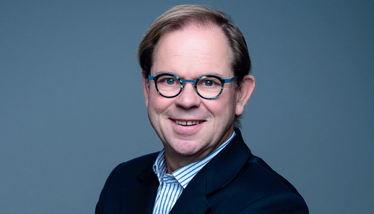System Addict
Researchers have developed a new chemical entity that can cut alcohol consumption in half
| 4 min read | News

Credit: Author supplied
With more than 35 years’ experience in the pharma industry, Emmanuel de Rivoire was invited to join the Kinnov Therapeutics team as CEO in 2017. Tempted by the entrepreneurial adventure of a start-up company, he joined with the aim of progressing the KT-110 project, which is based on a pharmacological concept proposed by INSERM and le Collège de France neurobiologist Professor Jean Paul Tassin.
KT-110 is now the company’s lead compound which, when used as a treatment for alcoholism, can potentially reduce alcohol consumption by half among heavy drinkers in just three months. With phase II trial data now being generated, we asked de Rivoire about the medical needs of these patients and the societal benefits such a drug can bring.
What is the definition of addiction?
When you have a cigarette or a glass of beer or wine, it produces pleasure via a dopamine release. This is called the “reward system.” In healthy patients, this reward system is regulated, which means that after a number of drinks you have no more reward and therefore no more motivation to continue. However, addiction is defined when this reward system regulation breaks, meaning there is a constant reward and constant motivation to continue. Tassin discovered that we can restore the control of the reward system by acting simultaneously on two receptors: one addressing the serotonin system and one addressing the noradrenergic system, which is why KT-110 is made of two compounds. Once the reward system is reestablished or reconnected, you give the patient control of their consumption.
How great is the need for new pharmaceutical solutions in alcoholism?
Very few addicted people, or sufferers, seek treatment – just 10 percent of alcohol use disorder (AUD) patients, which results in a huge medical need on the epidemiology side. If you consider the health consequences, alcohol is one of the top public safety issues in the world. Every year, roughly three million people die because of alcohol. With six million AUD patients with a very high-risk drinking level in Europe and another six million in the US, this is a very large population that desperately needs to be better treated.
In AUD social epidemiology data, people of a lower income appear more frequently than any other income bracket in the general population. And that’s why it is very important that a new treatment can be accessible to everyone.
How do you hope your drug will impact patients?
We want to focus on the population consuming more than 10 drinks a day for males and six for females. On average, we can cut consumption in half with KT-110, which is now the outcome of our phase II clinical trials. The reduction of consumption between the start and end of treatment means those patients will be down to five drinks a day and therefore living somewhat normal lives. This is a big achievement. Historically, and this is still the case in the US, the only target for (or objective of) treatment was abstinence, but this doesn’t work because of withdrawal syndrome and because so many patients do not want that as a target.
In Europe, a focus on reducing consumption has already started with the approved products Nalmefene and Baclofene, but these are not very efficient. It is also not yet accepted by the FDA but we have had conversations with the agency and they are now considering that alcohol consumption reduction will be sufficient criteria to approve new drugs.
What were the challenges of identifying the appropriate compounds to trigger the required response?
The team tried to identify a single molecule that can act simultaneously on the two receptors (alpha 1B-R and 5H2A-R). They failed. They then tried to identify existing molecules that were acting on these receptors individually. This led to prazosin, which acts on the noradrenergic system, and cyproheptadine, which acts on the serotonin system. Both of these molecules are very well known.
When we submitted the animal data to the EU and US patent offices, we knew we had something new. They granted “composition of matter” patents, meaning the combination is considered a new chemical entity. In pharma, if you have no patents, you have no business. We are also looking for new molecules that can address this same mode of action so that a second generation of treatment can come 5-10 years later.
When do you anticipate market approval?
Three to four years. We have gained phase II clinical data, which shows a clear and unprecedented superiority of KT-110 over placebo. Now we can move to phase III, but we need to finalize our discussion with the regulatory authorities. We also need to scale up production of our once daily formulation. We hope to start phase III early in 2025, which is quite reasonable and gives us one year to recruit the patients; let’s say another year to treat, meaning that by the end of 2026 or early in 2027 – and considering that this is a very severe and life-threatening disease – we hope to have some kind of fast-track approval. In order to achieve that, we need to find a partner to secure the funding for this program.
- JA Tucker et al, “Epidemiology of Recovery From Alcohol Use Disorder”, Alcohol Res, 40(3): 02. (2020) PMCID: PMC7643818



















